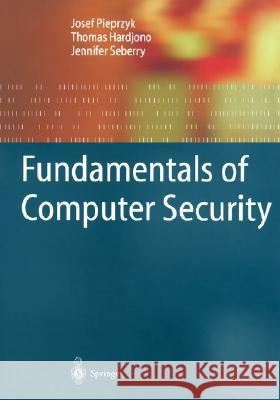Fundamentals of Computer Security » książka
Fundamentals of Computer Security
ISBN-13: 9783540431015 / Angielski / Twarda / 2003 / 704 str.
The primary goal of this book is to present the basic concepts in computer and networksecurity.Thestartingpointforthebookwasthelecturenotesthatwere used for teaching the undergraduate course on computer security at the U- versity of Wollongong (Australia). Later more topics were added to the book. Thesetopics weremainlytaught topostgraduatestudentsasanadvancedcr- tography course. Some chapters, especially those towards the end of the book, were included to help students in their seminar presentations. The book was recently used as the textbook for a new course, Cryptography and Infor- tion Security, o?ered for third-year students in the Computing Department at Macquarie University (Australia). Thebookcontains18chapters.Itstartswithanintroductorychapter(Chap. 1) that gives a brief summary of the history of cryptography. As the book is meant to be self-contained, the necessary background knowledge is given in the theorychapter(Chap.2).Itstartswithelementsofnumbertheory, goesthrough algebraic structures, the complexity of computing, and elements of information theory. Thechapter on private-key cryptosystems (Chap. 3) covers classical ciphers, the DES family of ciphers, and a selected subset of modern cryptosystems s- mitted for the AES call. An introduction to di?erential and linear cryptanalysis closes the chapter. The next chapter (Chap. 4) sets the background for publ- key cryptography. It describes the concept of a public key and discusses its implementations. The RSA cryptosystem deserves special attention for at least two reasons. The ?rst one is that its security nicely relates to the di?culty of factoring. The other one is the widespread use of RSA for communication - curity. Probabilistic encryption and modern public-key cryptosystems close the chapter











